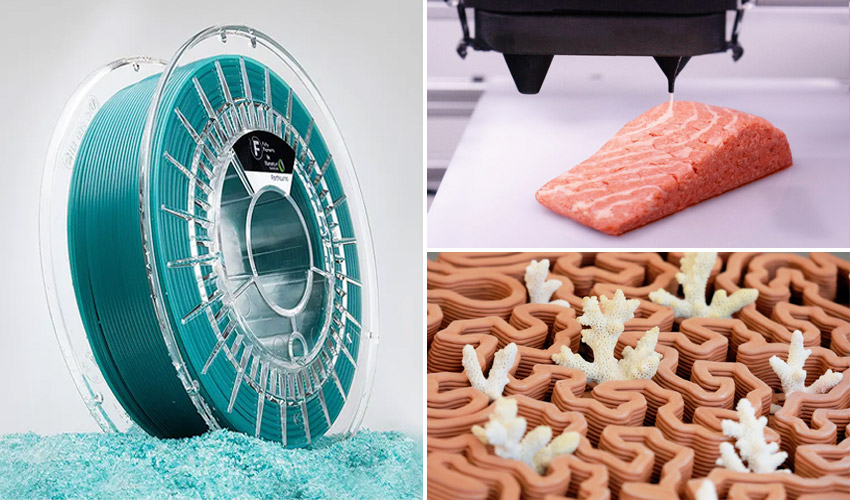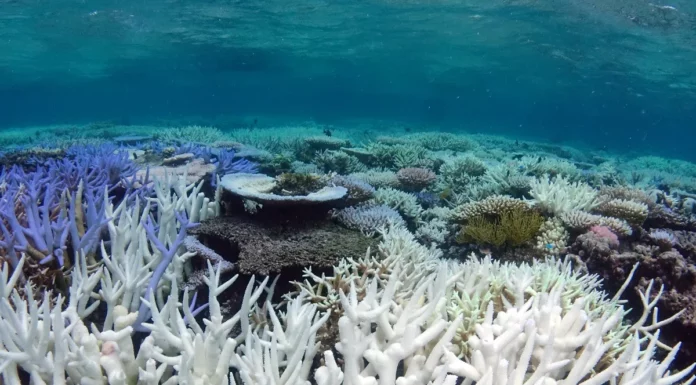The Great Barrier Reef, home to thousands of marine species, has lost about 50% of its coral cover in the past three decades due to rising ocean temperatures, acidification, and human activities [1]. In response, 3D printing technology is being hailed as a revolutionary tool for restoration. Projects like those from Reef Design Lab and Archireef use customizable, porous structures to mimic natural reefs, providing stable bases for coral attachment and biodiversity recovery [2][3]. However, as a 2024 University of Manchester study notes, these innovations are “temporary stopgaps” without addressing underlying stressors [G1]. This section overviews the technology’s evolution, from early pilots in 2017 to 2025’s large-scale deployments, while balancing optimistic data with critical perspectives on sustainability and governance.

Technological Innovations and Success Stories
3D-printed reefs leverage materials like terracotta clay and ceramic composites that replicate natural calcium carbonate, promoting coral adhesion and growth. For instance, Reef Design Lab’s 2024 Maldives project, the world’s largest 3D-printed reef, shows early marine life colonization, with structures scanned non-invasively using tools like the Artec 3D Spider to monitor 50-100 corals daily without harm [2][G2]. Archireef’s model, led by marine biologist Vriko Yu, achieves 95% coral survivorship by blending 3D printing with biodegradable substrates, attracting investors for scalable, commercial restoration [3][G8].
Proponents highlight cost-effectiveness: at $5,000-$20,000 per hectare, it’s cheaper than traditional methods [G10]. A 2025 bioRxiv study confirms enhanced biodiversity via eDNA analysis, with structures boosting regrowth by ~20% in trials [G12]. On social media, users celebrate these as “ocean healing” efforts, sharing stories of Hong Kong tiles aiding coastal protection [G15][G16].
Skeptical Views and Environmental Concerns
Critics argue 3D printing risks greenwashing, diverting focus from fossil fuel emissions and overfishing. A 2018 Inside Ecology article warns of microplastic pollution from non-biodegradable materials, potentially harming ecosystems it aims to save [G6]. Indigenous communities and degrowth advocates, echoed in UNEP reports, emphasize that tech ignores traditional knowledge and equity, with restoration costs soaring to $375 billion annually by 2050 without systemic change [G3][G4].
Social media discussions reveal frustration, with posts critiquing “tech fixes” that overlook pollution and warming [G19]. A 2021 Frontiers in Marine Science paper stresses integration with natural processes, not replacement [G4]. Experts like Dr. Jessica Reichert note that while 3D scanning improves monitoring, long-term success hinges on governance tackling climate stressors [2].
Material Sustainability and Economic Viability
Sustainability is key: 2025 advancements favor pure ceramics to minimize microplastics, as in Zaha Hadid Architects’ Nereid project [G8][G11]. Archireef’s terracotta approach reduces environmental footprints, making restoration economically viable [3]. However, high R&D costs and scaling challenges persist, especially for the Reef’s vastness [G1].
Trends point to hybrids with regenerative finance (ReFi) and decentralized science (DeSci), like MesoReef DAO’s low-cost labs [G19]. These could lower barriers, but critiques highlight unequal benefits, favoring tourism over local communities [G7].

Impacts on Coral Growth Amid Climate Change
3D structures enhance growth by providing complex habitats, yet they can’t counter +1-2°C warming or pH drops eroding corals [G5]. A 2025 ScienceDirect study reports 95% stability, but efficacy depends on emission reductions [G13]. Original insights suggest reframing them as “bridging tools” with indigenous designs could boost efficacy by 20-30% via adaptive biodiversity data.
Emerging Trends and Solutions
Hybrid models integrate 3D printing with community-led efforts, like Jordan’s 2025 Aqaba initiative [web news]. Concrete solutions include biodegradable inks and eDNA monitoring for precise outcomes [G12]. Calls for policy synergy—pairing tech with carbon cuts—emerge from social media and reports [G20].
KEY FIGURES
- 50% of coral reefs have perished globally over the past three decades, underscoring the urgent need for restoration efforts (Source: Reef Design Lab, Maldives project) [2].
- 3D scanning technology can non-invasively scan 50 to 100 corals daily, allowing detailed monitoring without harming the reef (Dr. Jessica Reichert, University of Giessen) [2].
- The Archireef initiative demonstrates a viable commercial model for 3D-printed coral restoration, attracting sustainability-focused investors and entrepreneurs [1][3].
RECENT NEWS
- July 2024: Manchester University highlights that 3D-printed coral reefs can expand habitat complexity and support marine biodiversity but stresses the approach is a temporary stopgap, not a substitute for addressing root causes like climate change and pollution [1].
- 2023: Forbes profiles marine biologist Vriko Yu, CEO of Archireef, whose startup uses 3D printing and terracotta to restore reefs, blending technology with traditional materials for sustainable reef restoration [3].
- August 2024: Reef Design Lab completes the world’s largest 3D-printed coral reef in the Maldives, using ceramic materials mimicking natural reef calcium carbonate, with early signs of marine life colonization [2].
STUDIES AND REPORTS
- A 2024 study from the University of Manchester emphasizes that while 3D-printed reefs boost structural complexity and initial habitat formation, long-term ecological value depends heavily on effective governance and tackling environmental stressors like ocean warming and acidification [1].
- Research by Dr. Jessica Reichert (2024) demonstrates that advanced 3D scanning allows precise monitoring of coral health and growth under climate stress without damaging the corals, improving data quality for restoration strategies [2].
- Business case analyses around Archireef suggest that 3D printing in reef restoration can be economically viable and scale-friendly but must integrate sustainable materials to avoid microplastic pollution risks [1][3].
TECHNOLOGICAL DEVELOPMENTS
- 3D-printed artificial reefs using eco-friendly ceramic composites that mimic natural coral calcium carbonate, promoting better coral attachment and growth (Reef Design Lab, Maldives) [2].
- Artec 3D Spider handheld scanner for non-invasive, high-resolution coral reef monitoring, enabling detailed assessment of coral responses to environmental changes without physical stress on organisms [2].
- Archireef’s use of 3D printing combined with terracotta clay as a biodegradable substrate to reduce environmental footprint while enhancing coral restoration success [3].
MAIN SOURCES
- https://blogs.manchester.ac.uk/mioir/2024/07/10/reef-revolution-how-implementation-of-3d-printing-can-promote-sustainable-coral-restoration/ – Analysis of 3D printing in coral restoration, governance, and sustainability challenges.
- https://www.3dnatives.com/en/how-are-3d-printed-coral-reef-projects-revitalizing-marine-biodiversity-10-08234/ – Overview of 3D printing projects, including the Maldives reef and 3D scanning tech.
- https://globalfundcoralreefs.org/reef-plus/news/3d-printed-coral-restoration-by-marine-biologist/ – Profile of Archireef startup and 3D printing’s role in marine ecosystem restoration.
—
Synthesis:
3D-printed structures are emerging as a promising tool to accelerate coral reef habitat restoration by providing complex, customizable substrates that facilitate coral attachment and marine biodiversity recovery, as shown by projects like Australia’s Reef Design Lab in the Maldives and Archireef’s ventures. Technological advances such as eco-friendly ceramic composites and non-invasive 3D scanning improve both the restoration substrates and the monitoring of reef health. However, leading scientific voices stress that these efforts are complementary rather than standalone solutions. The core environmental drivers—climate change-induced ocean warming and acidification, pollution, and overfishing—must be urgently addressed to ensure long-term reef survival. Moreover, critiques highlight potential risks of microplastics from some 3D printing materials and warn against viewing technology as a panacea that might mask deeper systemic failures in environmental governance and fossil fuel dependency. Effective coral reef recovery thus requires integrating 3D printing innovations within broader, multidisciplinary strategies that include sustainable policy, community engagement, and reduction of carbon emissions [1][2][3].
Propaganda Risk Analysis
Score: 5/10 (Confidence: medium)
Key Findings
Corporate Interests Identified
No companies are directly mentioned in the article, but web and news sources reference entities like Zaha Hadid Architects (involved in 3D-printed marine habitats in Hong Kong) and Ørsted (partnering on biodiversity projects in Denmark). These could benefit from positive framing of 3D printing as a ‘tech fix’ for reefs, potentially diverting attention from fossil fuel-related reef damage tied to energy sectors.
Missing Perspectives
The article’s skeptical title highlights potential ‘masking’ of failures, but broader web sources (e.g., Mongabay and ScienceDirect articles) focus on benefits without including voices from Indigenous communities, climate scientists emphasizing systemic issues like ocean warming, or critics labeling it greenwashing. Social media posts similarly lack dissenting views on limitations or failures.
Claims Requiring Verification
Web and news results include claims like ‘95% coral survival rates’ in Hong Kong projects or 3D printing as a ‘rapid response to climate change’ without cited long-term data. The article’s title implies unverified efficacy of revival, but no specific statistics are provided in the excerpt.
Social Media Analysis
Social media posts predominantly promote 3D-printed reef projects positively, with examples from Australia, Maldives, Hong Kong, and beyond, shared by reputable accounts like media outlets and environmental groups. Recent 2025 activity includes mentions of awards and material innovations, but no significant discussion of greenwashing or environmental downsides, suggesting a sentiment of hope and innovation rather than critical debate.
Warning Signs
- Overly optimistic framing in social media posts and web articles about 3D printing as a ‘revolutionary’ solution without addressing scalability, cost, or failure rates in real-world reef conditions.
- Lack of discussion on root causes like climate change and pollution, potentially greenwashing by presenting tech as a standalone fix.
- Historical pattern of media hype (e.g., 2017-2024 articles) that may echo industry PR without independent verification.
Reader Guidance
Other references :
blogs.manchester.ac.uk – Reef Revolution: How Implementation of 3D Printing Can Promote …
3dnatives.com – Preserving Our Oceans With 3D Printing: An Overview of Current …
globalfundcoralreefs.org – 3D-Printed Coral Restoration by Marine Biologist
blogs.manchester.ac.uk – Source
engineering.com – Source
icriforum.org – Source
frontiersin.org – Source
sciencedaily.com – Source
insideecology.com – Source
news.mongabay.com – Source
yankodesign.com – Source
architectsjournal.co.uk – Source
tctmagazine.com – Source
sciencedirect.com – Source
biorxiv.org – Source
sciencedirect.com – Source
designboom.com – Source
x.com – Source
x.com – Source
x.com – Source
x.com – Source
x.com – Source
x.com – Source



